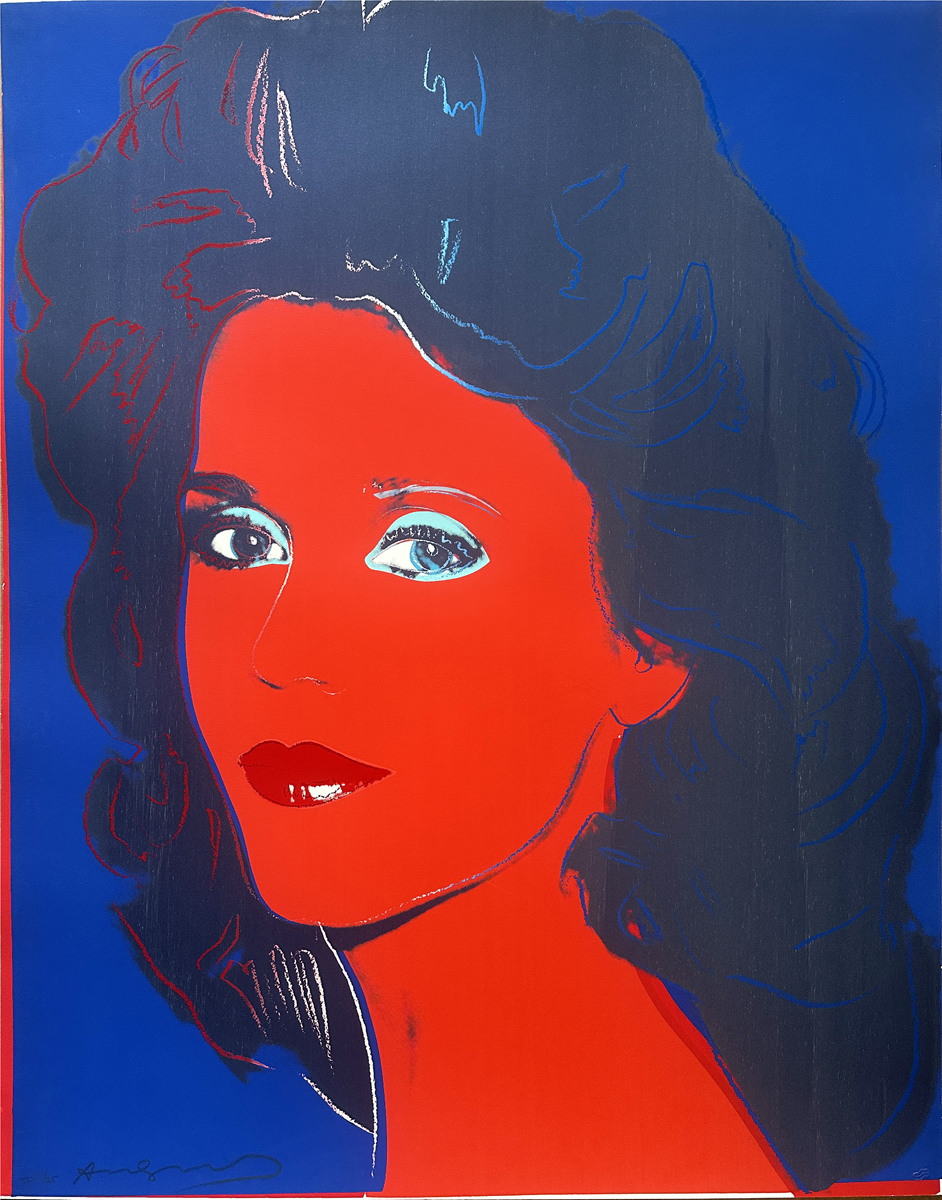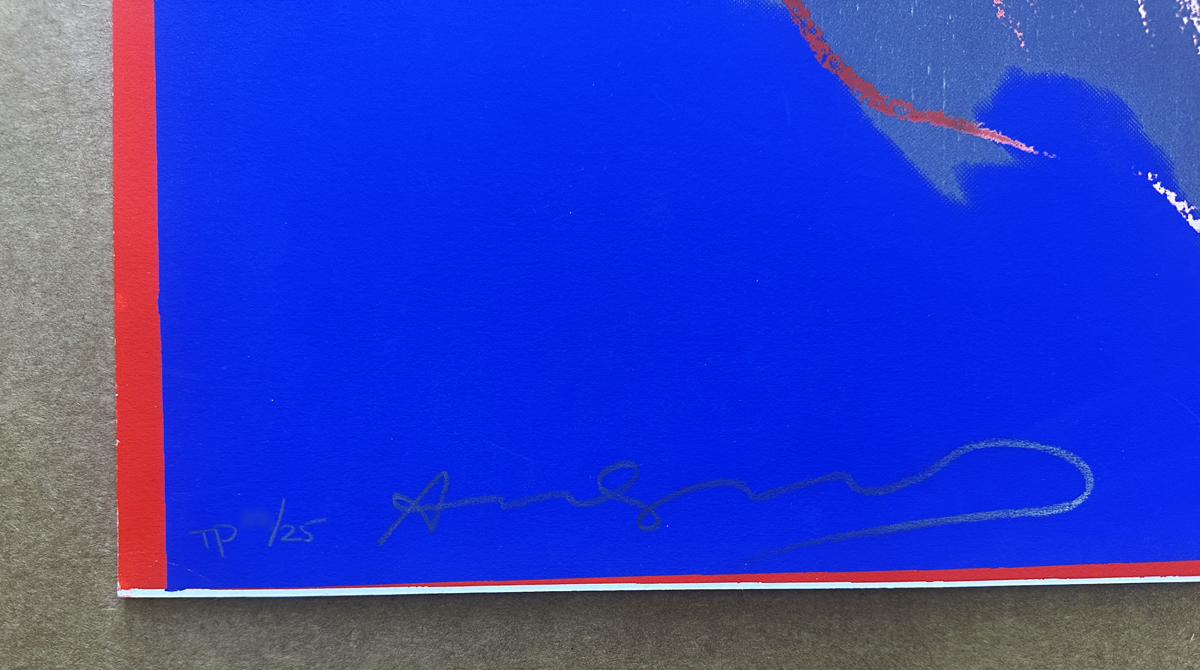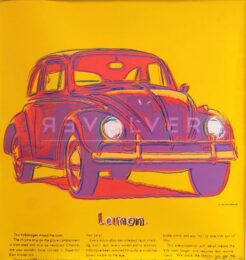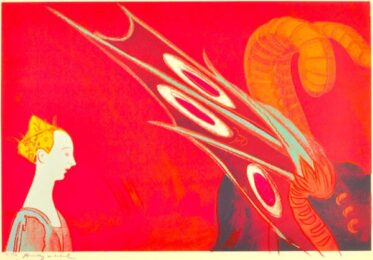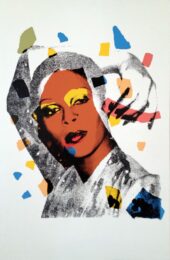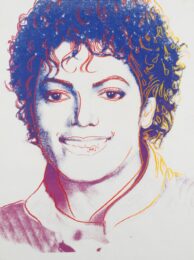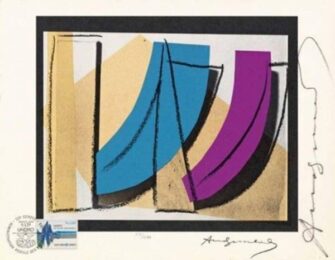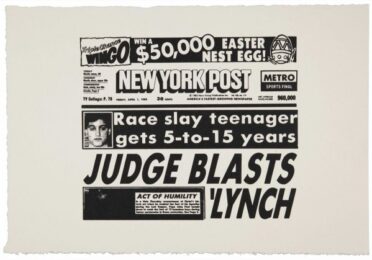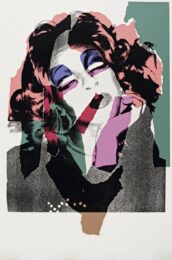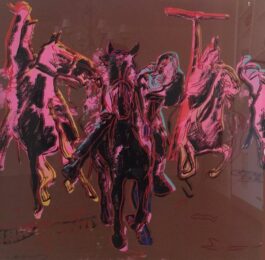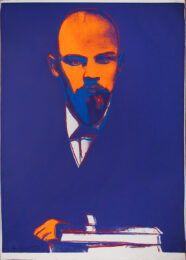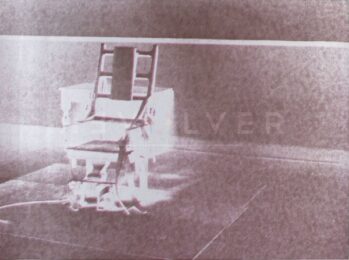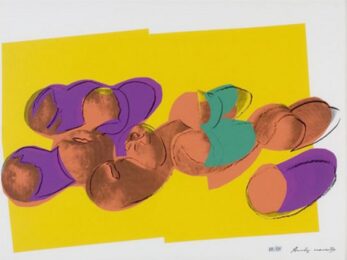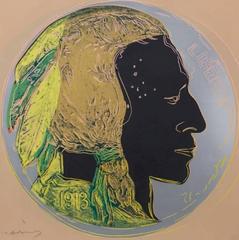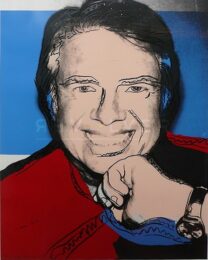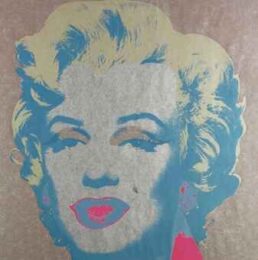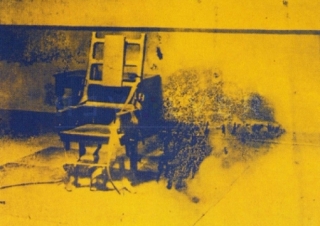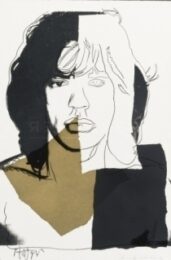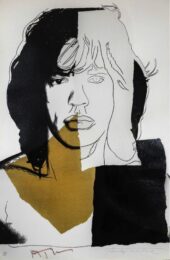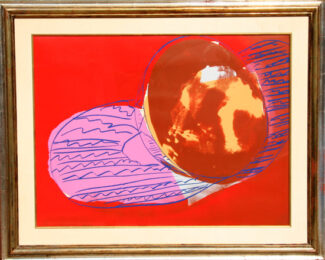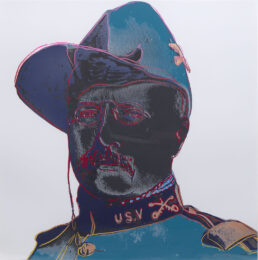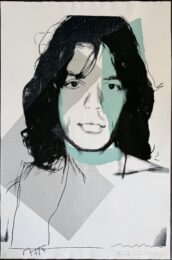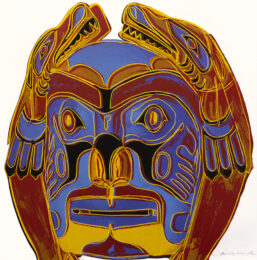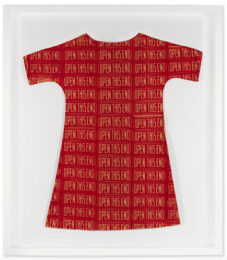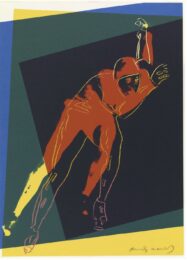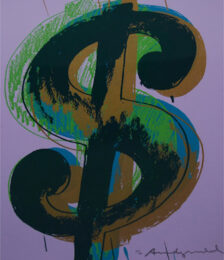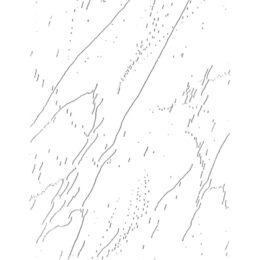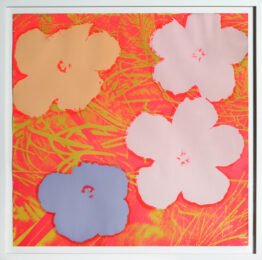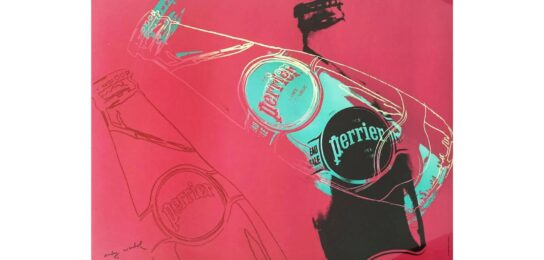Details — Click to read
Jane Fonda (Trial Proof) by Andy Warhol presents a bold reinterpretation of the actress through intense color contrasts and graphic precision. The composition centers on Fonda’s face, her turquoise eyes illuminated against a deep red background. Her skin glows in vivid coral tones, while dark blue shadows and outlines frame her features and cascade through her voluminous hair. The palette feels charged with energy—its interplay of red, blue, and black evokes both glamour and defiance. Warhol transforms Fonda’s familiar image into an emblem of power, capturing her celebrity presence and political conviction in a single, electrifying frame.
Jane Fonda (Trial Proof) was created in 1982 as part of Warhol’s exploration of fame and activism. Like his portraits of Liz Taylor and Marilyn Monroe, this work blends allure and critique. Fonda was the celebrity sex symbol of her time and remains part of American pop culture to this day. During the 1960s, she rose to fame for her roles in Cat Ballou (1965) and Barbarella (1968). Later in her career, already a Hollywood icon, she had become equally known for her outspoken political voice.
In this context, Warhol’s portrait captures both her image and influence. Moreover, the trial proof format reveals variations in hue and layering from the published edition. As such, it offers insight into Warhol’s process of experimentation. This particular print is also signed by both Warhol and Fonda, uniting artist and subject in a shared gesture of authorship.
Jane Fonda (Trial Proof) by Andy Warhol in Context
In addition, this rare variation highlights Warhol’s technical precision during the 1980s—a period that saw him return to the celebrity portrait with renewed sophistication. The red background radiates intensity, while the blue underpainting introduces a cool counterbalance. Consequently, the result is both intimate and theatrical, situating Fonda between the movie screen and the political stage. Her confident gaze and luminous expression suggest a woman equally at home in art, activism, and fame. Finally, through his mastery of silkscreen technique, Warhol elevates Fonda’s likeness into a timeless study of visibility and influence.

